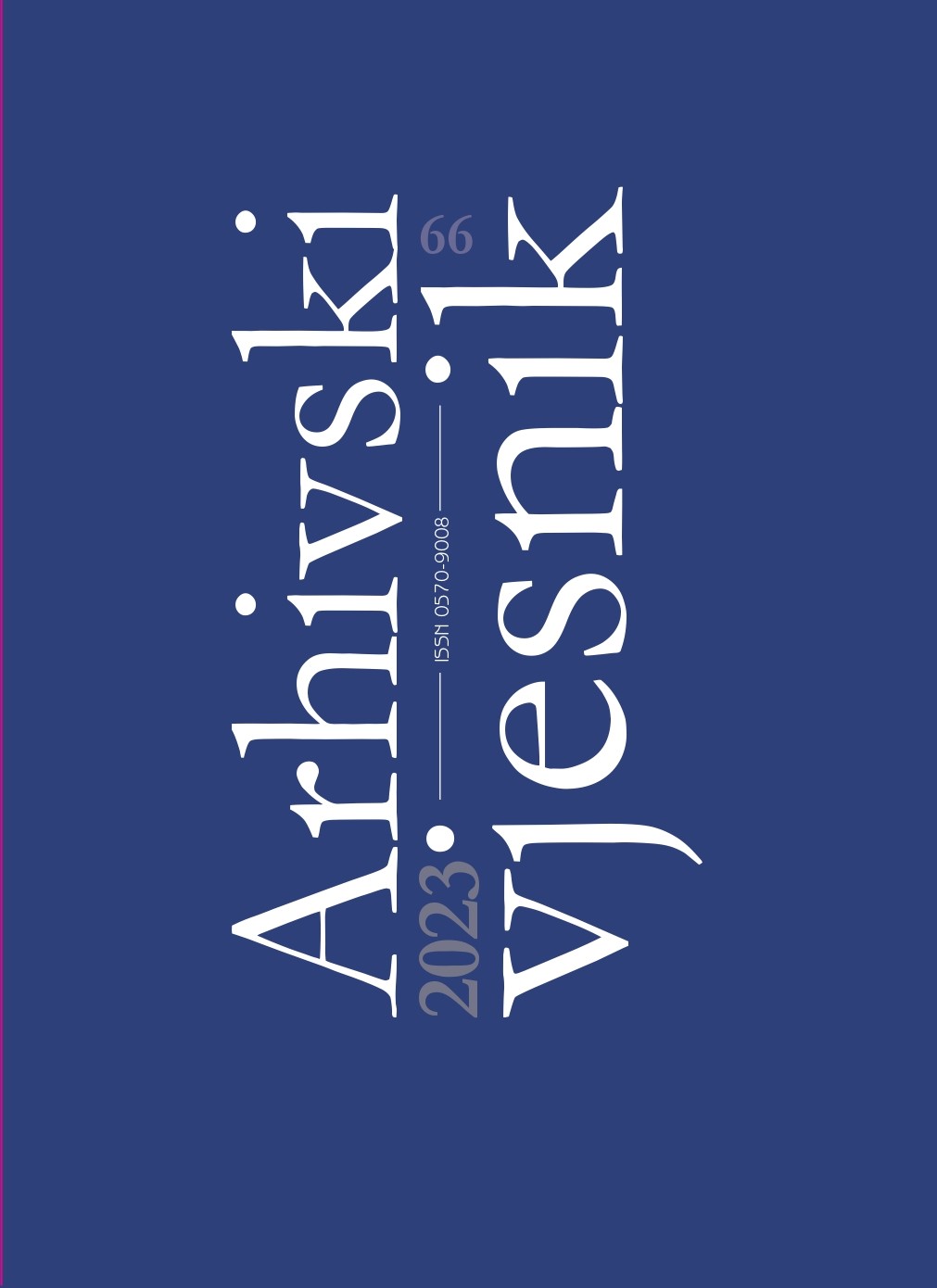The Nomination of Aloysius Stepinac for Archbishop-Coadjutor of the Archdiocese of Zagreb
DOI:
https://doi.org/10.36506/av.66.11Keywords:
Aloysius Stepinac, Archibishop-coadjutor, archdiocese of Zagreb, Archives of the Secretariat of State of the Holy See, Eugenio Pacelli, Pope Pius XIAbstract
When the Holy See on 30 May 1934 published – among other regular nominations – the Papal appointment of Father Aloysius Stepinac to the Titular See of Nicopsis, at the same time nominating him the Archbishop-Coadjutor of Zagreb with the right of succession to Archbishop Antun Bauer, it seemed as a regular change in the Episcopate of the Catholic Church in the world. This, however, was the culmination of a dramatic story that lasted for almost four years behind the scenes. The Archives of the Secretariat of State of the Holy See shed new light on that process that received personal attention of Pope Pius XI, and show a guiding hand of his successor, then Secretary of State Cardinal Eugenio Pacelli, later Pope Pius XII.
The search for the successor of the long-standing Archbishop of Zagreb started in 1930, when he himself felt that his health was failing and his age was catching up with him, so he wanted to ensure a smooth transition of governance over the largest Archdiocese in Europe at the time.
Also, the frail relations of the Holy See with the newly formed Kingdom of Yugoslavia had to be taken into consideration. After the Great War, a multination state of South Slavs was formed, out of the multitude of other former states on that territory. Consequently, several international treaties on the relations of the Church and secular authorities (concordats) were in force at the time of the formation of the new State, each relating to a separate part of the newly formed Kingdom. Those juridical norms had to be taken into consideration, in particular in relation to the formation of new ecclesiastical circumstances, and in appointing new bishops. The difficulties in relations between the Holy See and the authorities in Belgrade needed delicate handling, which Rome entrusted to some of its most capable diplomats.
The process of selection of candidates for episcopate usually begins with the suggestions of outgoing bishop, which are sent to Rome through its Nunciature (Holy See Embassy) in the capital city – as it was done in this case. The candidates proposed were, however, after a long and protracted investigation,deemed unsuitable for the high office of Archbishop of Zagreb, the largest Metropolitan See in Europe at the time, and also – while not having the honorary title of Primate of Croatia – still considered primus inter pares among the Episcopate of Yugoslavia.
Archbishop Bauer would not accept the negative position regarding “his” candidates, and for a prolonged period of time continued to insist that one of them be nominated. The Holy See, however, continued the search among the clergy of the Archdiocese, both in Zagreb and in Rome. Several more candidates were proposed, but to no avail. Also, suggestions had been made that some diocesan bishop from another diocese be transferred to the Cathedra of Zagreb. That solution was also dismissed as no suitable candidate was found.
Two years after the beginning of the process, in 1932, a consensus was finally reached within the various authorities of the Church to appoint Monsignor Aleksandar Gahs, who accepted his nomination. However, notwithstanding the fact that the Holy See was not in juridical obligation to request the consent of the secular authorities, due to the diplomatic relations with the Belgrade regime and the Court of Karađorđević, this decision was submitted for approval – which was denied. The whole process was again stalled for over a year, while Holy See attempted to work around that decision of the Belgrade Government and the King himself.
New candidates were then discussed, most of them rejected by the Archbishop as unsuitable for his high office. The declining health of Archbishop Bauer brought the process to the level of high urgency when he was hospitalized in early 1934 in a very precarious state. At that moment, Secretary of State Cardinal Eugenio Pacelli on the advice of Apostolic Nuncio in Belgrade takes an unprecedented decision to propose to the Pope a conditional but immediate appointment of one of the candidates, even without the consent of the Government, however, only in case that “Archbishop Bauer passes”. That instruction is sent in coded cable to the Nunciature. In case the Archbishop overcomes his health crisis, the Nuncio is instructed to urgently investigate a completely new and to-date unknown candidate – Father Stepinac.
That instruction resulted in a long and positive description of the candidate, and within less than a month with his formal appointment as Archbishop Coadjutor of Zagreb. To that nomination, after some reflection, the Government declared that it will not object, which resulted in its later formal confirmation.
The analysis of the archival documents tell us the story of intrigue, of personal resentment, of interesting international and diplomatic relations, but also on unexpected twist of fate that has brought a limelight to shine on the new and surprising choice of Archbishop, later Cardinal and Blessed Aloysius Stepinac.


